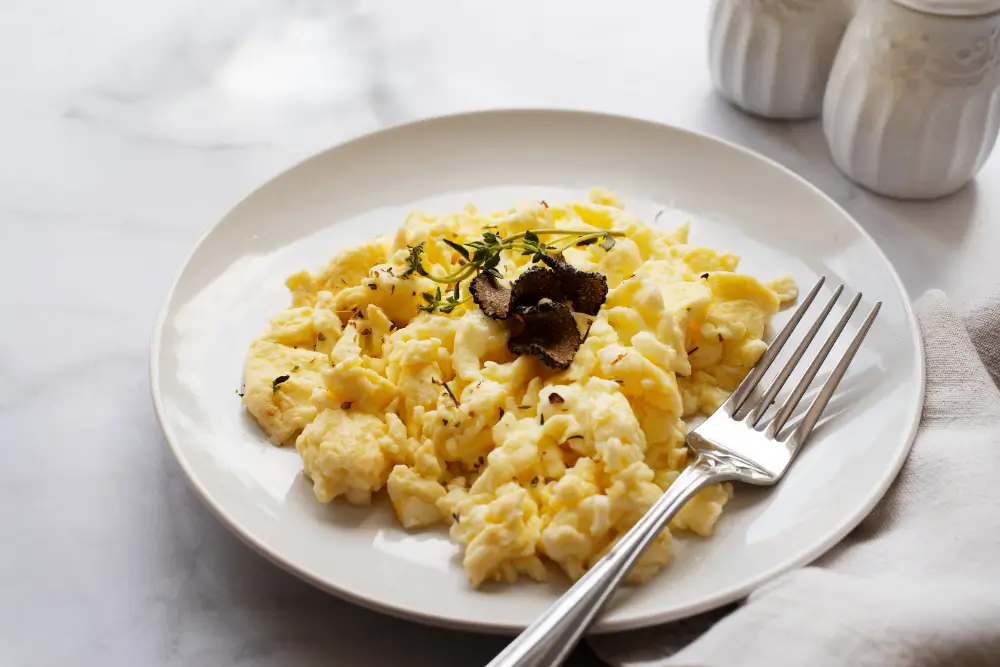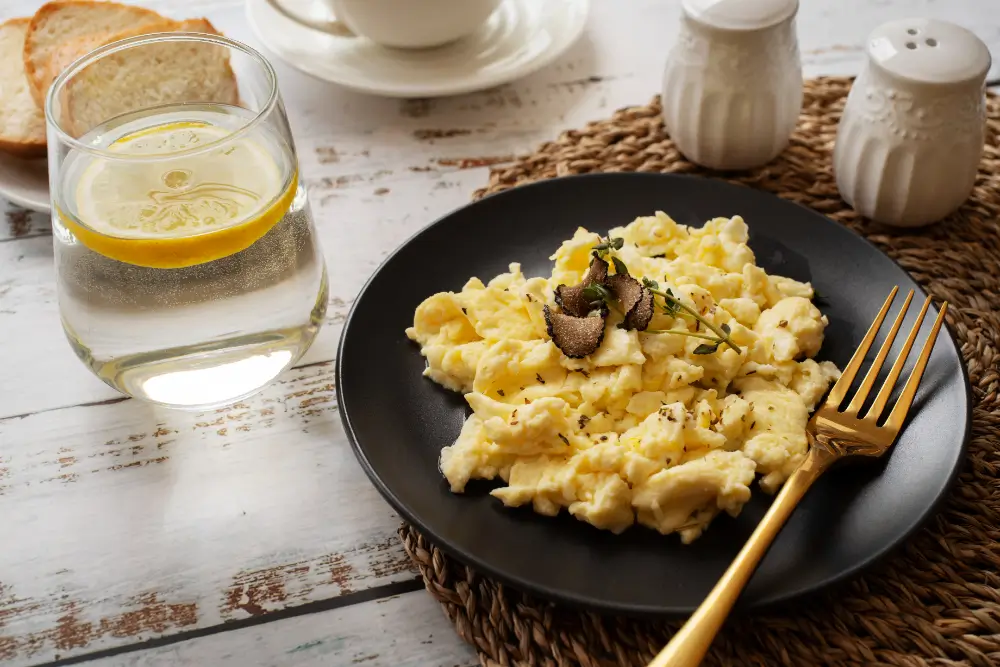
Scrambled eggs are a breakfast staple beloved worldwide for their simplicity and versatility. But what if you’re out of milk or need a dairy-free alternative? Don’t worry—you can still whip up fluffy, creamy scrambled eggs without using milk. This guide covers everything you need to know, from the benefits of making eggs this way to tips and tricks for achieving that perfect texture.
Why Scrambled Eggs Without Milk?
The Case for Dairy-Free Scrambled Eggs
Many recipes call for milk in scrambled eggs, but it’s not essential. Making scrambled eggs without milk is a great option for those with dietary restrictions, lactose intolerance, or simply when milk isn’t available. The absence of milk doesn’t compromise flavor or texture—quite the opposite, in fact! You’ll find the natural richness of the eggs shines through more vividly.
Dairy-free scrambled eggs also appeal to health-conscious eaters. By skipping milk, you reduce unnecessary fats and sugars, creating a lighter, more wholesome dish. Whether you prefer simplicity or prioritize clean eating, this approach is a winner.
Benefits of Making Scrambled Eggs Without Milk
Going milk-free when making scrambled eggs comes with several advantages:
- Enhanced Flavor: The natural taste of eggs becomes the star of the show.
- Easier Preparation: Fewer ingredients mean less hassle, especially during busy mornings.
- Dairy-Free Flexibility: Perfect for those following lactose-free or dairy-free diets.
Not only are scrambled eggs without milk easy to prepare, but they’re also incredibly satisfying. Plus, with the right technique, you can still achieve a light, fluffy texture that rivals traditional recipes.
Up next, we’ll dive into the essential ingredients and tools you’ll need to perfect this simple yet delicious breakfast dish.
Essential Ingredients and Tools
Key Ingredients for Delicious Scrambled Eggs
To prepare scrambled eggs without milk, you only need a few basic ingredients, but the quality matters:
- Eggs: Fresh, high-quality eggs are the star of this dish. They provide a rich flavor and a creamy texture.
- Butter or Oil: Using unsalted butter or olive oil ensures the eggs don’t stick to the pan while adding a smooth, savory taste.
- Salt and Pepper: Simple seasonings like table salt and freshly ground black pepper enhance the eggs’ natural flavor.
Optional add-ons like chives, green onions, or a dash of paprika can add extra flavor. If you prefer a dairy-free option, non-dairy butter or coconut oil works just as well.
For more detailed guidance, check out this resource on making scrambled eggs without milk.
Recommended Cooking Tools and Utensils
The right tools make a big difference in achieving soft and fluffy scrambled eggs:
- Non-Stick Skillet: Prevents sticking and makes cleanup a breeze.
- Silicone or Wooden Spatula: Gentle on the pan, ensuring the eggs stay fluffy while cooking.
- Mixing Bowl and Whisk: Proper whisking aerates the eggs for a lighter texture.
A stainless steel pan can work in a pinch but may require more attention to prevent sticking.
The Technique for Perfect Scrambled Eggs
Whisking: The Secret to Fluffiness
The first step in making perfect scrambled eggs without milk is whisking. Beat the eggs thoroughly until the yolks and whites are fully combined. Whisking introduces air, which creates a lighter and fluffier texture when cooked.
Temperature Control: Cooking Eggs Without Overcooking
Cooking eggs over medium-low heat is essential to avoid a rubbery texture. A lower temperature allows the eggs to cook gently and evenly. Stir continuously with your spatula to prevent the eggs from setting too quickly.
For more tips on cooking techniques, visit Simply Whisked’s guide.
Achieving Soft and Creamy Texture Without Milk
Soft, creamy eggs are possible without milk by controlling the heat and stirring constantly. Adding a small knob of butter while cooking enhances the creaminess. Non-dairy butter or a splash of water can also mimic the moisture milk usually provides.
Common Mistakes to Avoid
- High Heat: Cooking eggs too fast leads to a dry, rubbery texture.
- Skipping Whisking: Poorly mixed eggs will result in uneven cooking.
- Overcooking: Eggs continue to cook from residual heat, so remove them from the pan just before they’re done.
Master these techniques, and you’ll never miss milk in your scrambled eggs!

Variations and Additions for Extra Flavor
Adding Herbs and Spices for a Twist
While classic scrambled eggs without milk are delicious on their own, adding herbs and spices can elevate the flavor. Try mixing in fresh chives, parsley, or cilantro for a burst of freshness. A sprinkle of paprika, turmeric, or garlic powder adds depth and complexity.
Experimenting with seasonings like chili flakes or curry powder can give your eggs an unexpected, exciting twist. These additions are perfect for customizing your breakfast to suit your taste buds or impressing guests with a unique dish.
Incorporating Vegetables and Proteins
Adding vegetables not only boosts the flavor but also increases the nutritional value of your scrambled eggs. Diced bell peppers, sautéed onions, or fresh spinach work beautifully. For a hearty option, include proteins like smoked salmon, diced ham, or cooked sausage.
Non-dairy cheese shreds can also make a delightful addition, melting into the eggs for a creamy texture without milk. These variations ensure that scrambled eggs without milk remain versatile and satisfying.
Pairing Ideas for a Complete Breakfast
Sides That Complement Scrambled Eggs Without Milk
Scrambled eggs shine brightest when paired with the right sides. Freshly toasted whole-grain bread is a classic choice, perfect for scooping up every bite. For a lighter option, serve your eggs with a side of fresh fruit or a small salad.
For those seeking something heartier, hash browns or roasted sweet potatoes make excellent companions. Their crispiness contrasts beautifully with the creamy texture of the eggs.
Serving Suggestions for Different Occasions
Presentation matters, even for simple dishes. Serve your scrambled eggs without milk on a warm plate garnished with fresh herbs. Pair them with a hot cup of coffee or tea for a cozy morning meal.
For brunch gatherings, consider creating a buffet with various toppings and sides. Guests can customize their plates, making the meal interactive and enjoyable. These ideas ensure that scrambled eggs feel special, no matter the occasion.
FAQs About Scrambled Eggs Without Milk
Can You Make Scrambled Eggs Without Milk Fluffy?
Absolutely! You don’t need milk to achieve fluffy eggs. The key is in the whisking. Beat the eggs thoroughly before cooking to incorporate air, which creates that light, fluffy texture. Using low heat and gentle stirring while cooking also helps prevent the eggs from drying out or becoming rubbery.
What Are Good Substitutes for Milk in Scrambled Eggs?
If you prefer the consistency milk offers but want to keep your dish dairy-free, there are great substitutes. Water is the simplest option and works wonderfully. For a creamier texture, try non-dairy alternatives like almond milk, coconut milk, or oat milk. A dollop of plant-based yogurt can also add a tangy twist. Regardless of the substitute, you’ll find scrambled eggs without milk are just as satisfying.
How to Reheat Scrambled Eggs Without Losing Flavor?
Reheating scrambled eggs is easy if done correctly. To retain their flavor and texture, use a low heat setting on the stovetop or microwave. Add a small splash of water or butter while reheating to bring back their moisture. Stir gently to avoid overcooking, and they’ll taste freshly made!
Conclusion and Final Thoughts
Scrambled eggs without milk are proof that simplicity can be delicious. By focusing on technique and fresh ingredients, you can create a dairy-free breakfast that doesn’t compromise on taste or texture.
Whether you’re making a quick weekday meal or hosting a weekend brunch, scrambled eggs are endlessly versatile. Pair them with toast, fresh fruit, or sautéed vegetables for a complete dish that’s both nourishing and satisfying.
Don’t be afraid to experiment! Add herbs, spices, or veggies to customize your eggs to your liking. With this guide, you’ll master the art of fluffy, creamy scrambled eggs without needing milk. Enjoy your dairy-free breakfast adventure!

